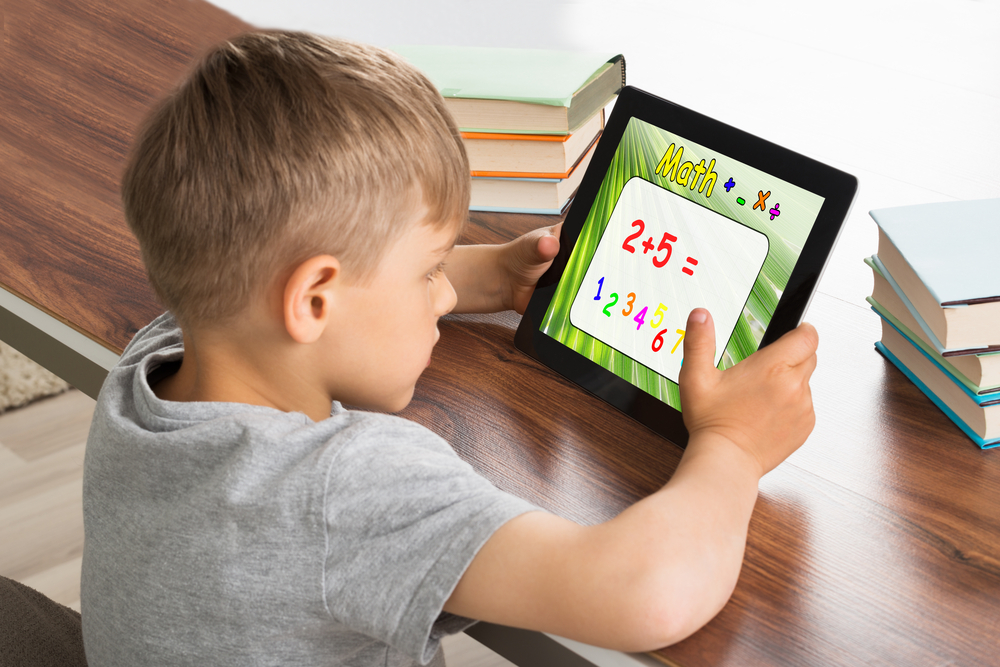Comparing lengths Normal Math Worksheets for Ages 6-7
4 filtered results
-
From - To
Welcome to our "Comparing Lengths" Normal Math Worksheets for Ages 6-7! Designed to enhance foundational math skills, these engaging worksheets help young learners understand and compare lengths using fun visuals and interactive challenges. Students will practice measuring objects, identifying longer and shorter items, and solving real-world problems involving length. With a variety of exercises aimed at different learning styles, these worksheets build confidence and foster a love for math. Perfect for classroom use or at-home learning, our resources support essential skills development in an enjoyable, hands-on manner. Join us in making math exciting as kids explore the concept of length!
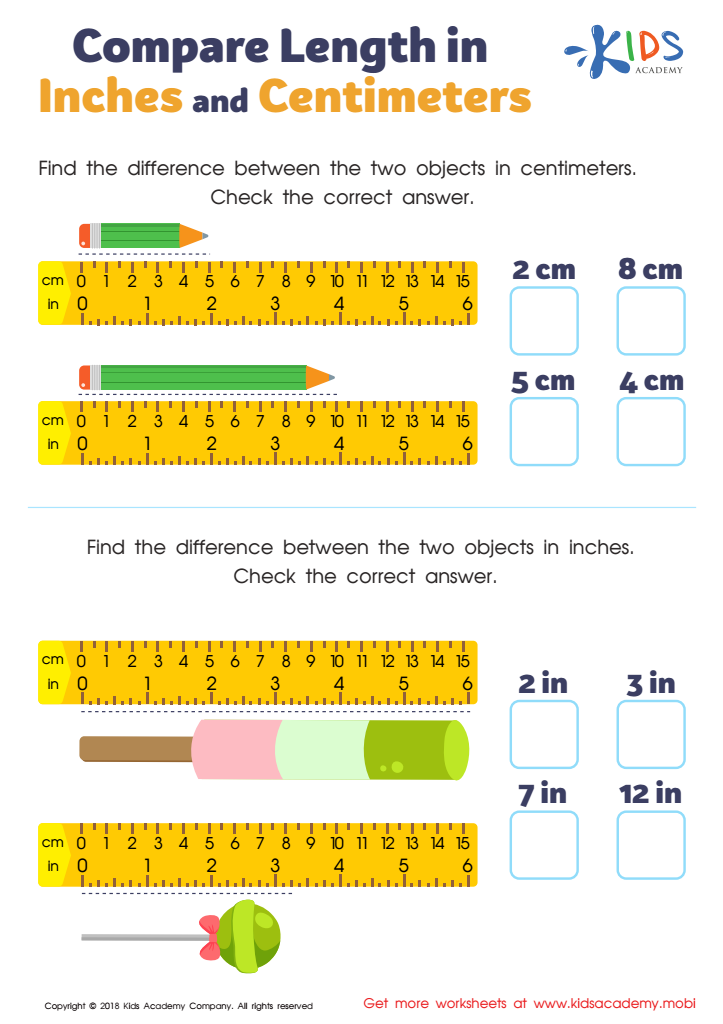

Compare Length in Inches and Centimeters Worksheet
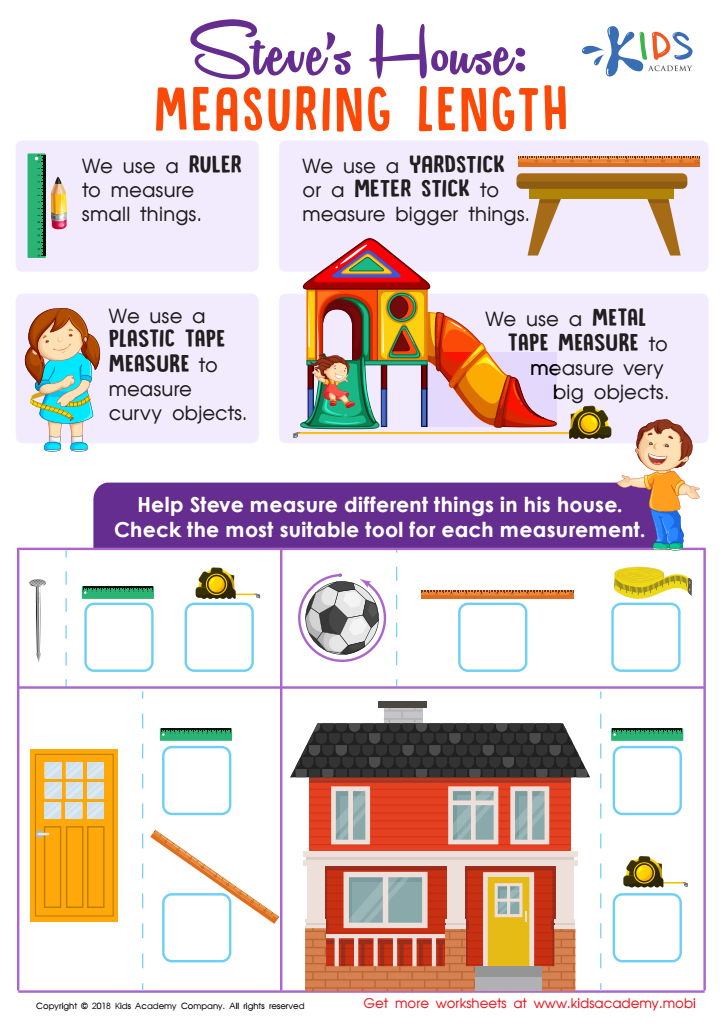

Steve's House: Measuring Length Worksheet
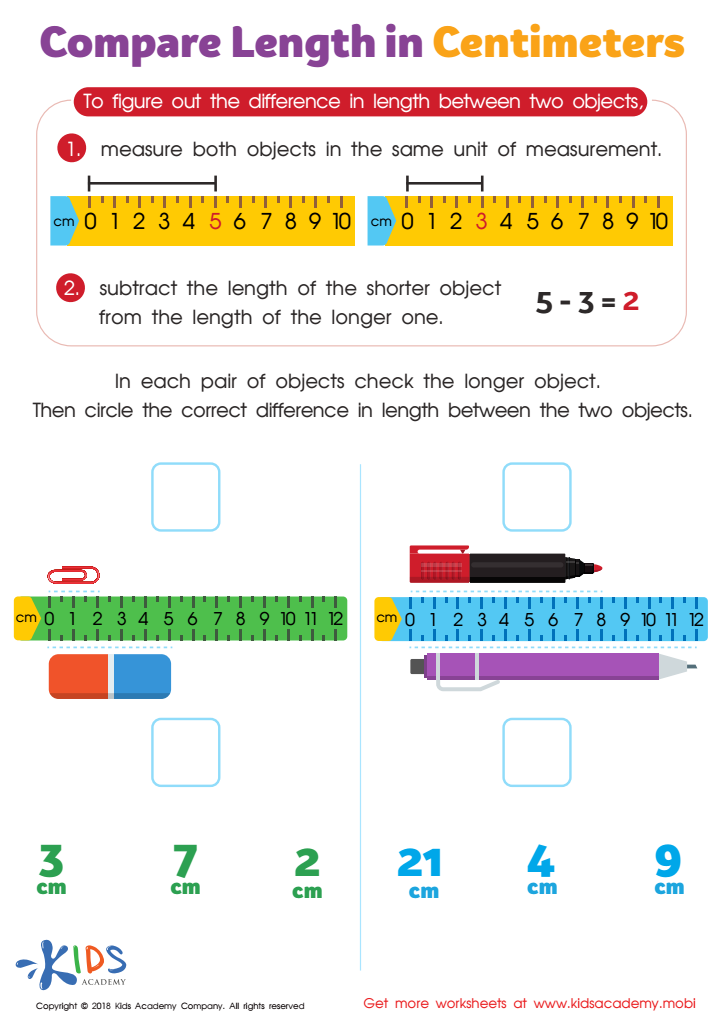

Compare Length in Centimeters Worksheet
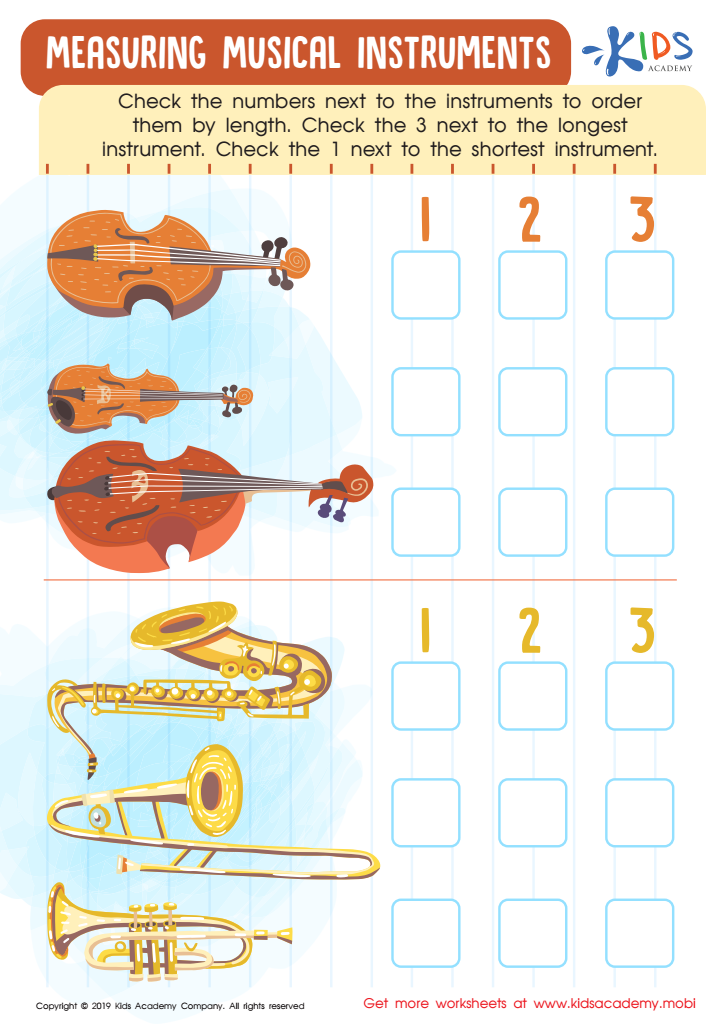

Measuring Musical Instruments Worksheet
Comparing lengths is a fundamental skill in math that young children, particularly those aged 6-7, begin to explore. Parents and teachers should prioritize this concept because it serves as a building block for various mathematical and real-life applications. Understanding how to compare lengths helps children develop spatial awareness and critical thinking skills, fostering their ability to categorize and organize information effectively.
Moreover, measuring and comparing lengths enhances children's problem-solving abilities. For example, when children engage in activities that involve measuring or comparing objects, they apply concepts of size, estimation, and precision, all of which are crucial in everyday scenarios, such as cooking, crafting, or arranging spaces.
Additionally, this skill prepares students for more advanced concepts in mathematics, such as addition and subtraction, as they learn to understand the relationships between different measurements. Parents and teachers can also demonstrate real-world applications of length comparison by involving children in simple tasks, like measuring their height versus an object or comparing the lengths of different items during playtime.
Overall, emphasizing comparing lengths nurtures children’s curiosity, enhances their reasoning skills, and sets the stage for future academic success, highlighting the importance of this foundational concept.
 Assign to My Students
Assign to My Students




